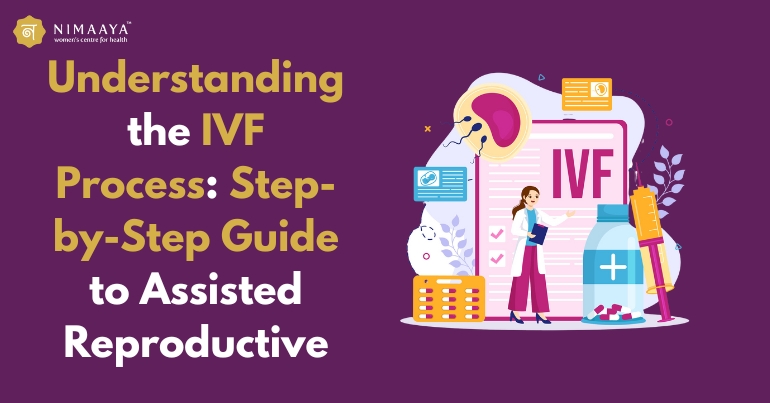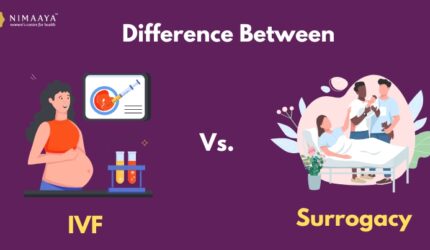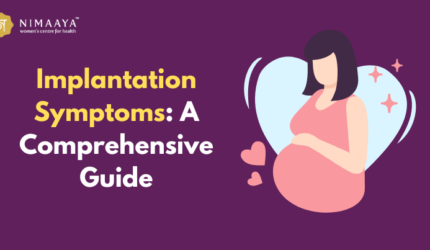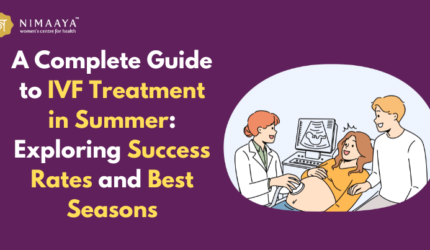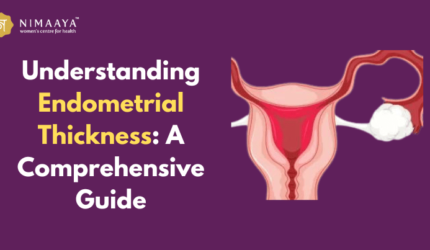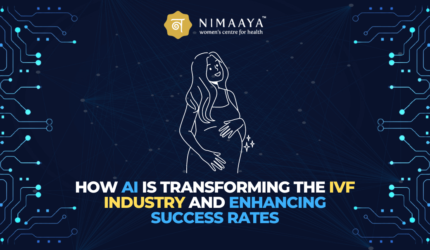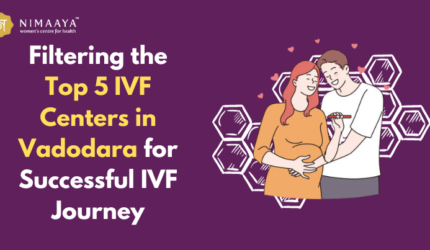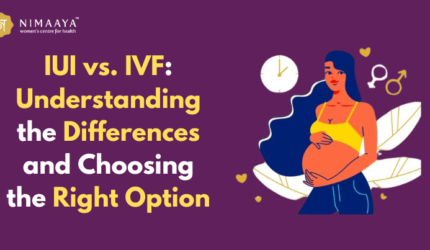In India, 9 out of 10 women choose the IVF process for fertility treatments while planning their families.
Fertility treatment is the best option if you also plan to have a family but can’t because of infertility issues, heredity factors, or other problems.
In today’s era, there are multiple treatments that couples can opt for. IUI, ICSI, and many more to facilitate their journey towards conceiving a baby. However, it’s essential to acknowledge that these diverse processes come with potential risks, complications, side effects, and emotional and mental pressure that couples often go through.
Even before beginning the IVF process, Nimaaya ensures couples receive proper guidance and counseling sessions. This preparation aims to simultaneously provide them with the necessary mental and emotional stress.
Also, the IVF process step by step is explained to them so they know when their presence is required and what is expected from them.
In this blog, we will dive deep into the test tube baby process. Get ready to learn it in depth!
What is the IVF Process?
IVF process, or (in vitro fertilization), is a medical technique that will assist couples in achieving a pregnancy when the natural conception process is challenging or impossible. This process involves combining an egg and sperm outside the body within a laboratory dish, forming an embryo. Subsequently, the source is transferred into the woman’s uterus for potential implantation and pregnancy.
Also Read: The Complete IVF Guide: Process, Success Rates & Key Considerations
In-Depth Study on IVF Process
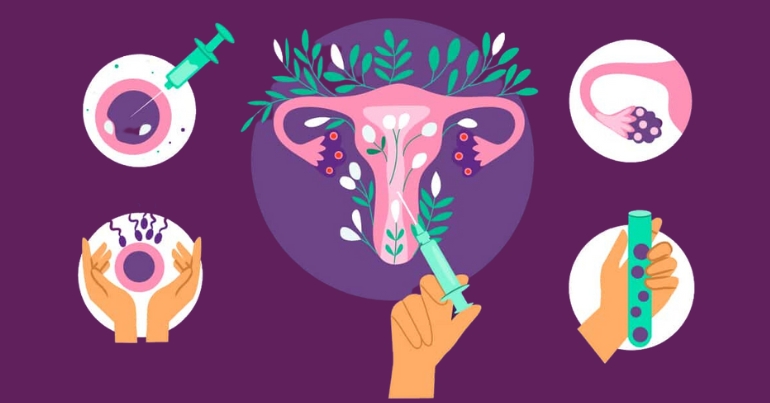
The steps in the IVF process involve:
1) Injectable Hormone Medication
With the IVF procedure, injectable hormone medication plays a very pivotal role. But how exactly does it contribute?
It ensures that it can achieve controlled and coordinated follicular development. During this stage, the IVF fertility specialist provides the likelihood of viable eggs during the subsequent IVF steps.
The dosage and duration of administration are carefully monitored to track the progress of medications like FSH (follicle-stimulating hormone). These factors are then adjusted or prescribed by the individual response, a process meticulously examined through ultrasound and hormonal blood tests.
2) Stimulating Ovaries
The initial step of the IVF process begins with the stimulation of the ovaries. Generally, the natural menstrual cycle yields one egg per month, which is insufficient to start IVF. However, IVF aims to collect multiple eggs and increase the chances of successful fertilization. To achieve this goal, it involves stimulating the ovaries using specialized medications.
How Does this Medication Work?
These medications come in injectable hormones designed to mimic the body’s hormone production. Through these hormones, the ovaries get encouraged to generate multiple egg-containing sacs known as follicles. This step aims to enhance the chance of obtaining many mature eggs during the later stages of the Test Tube Baby Process.
At Nimaaya, the medications prescribed are either birth control pills or estrogen depending on individual health conditions. Let’s explore the two crucial steps in the process:
a) Monitoring Ultrasound
In the ovarian stimulation phase, we saw that monitoring the follicle growth and development of the follicle step is essential. So, what role does ultrasound serve?
The ultrasound furnishes authentic time imagery of the ovaries, enabling the team at Nimaaya to track the size and number of developing follicles.
Regular ultrasound monitoring becomes indispensable to uphold track of ultrasound injectable hormone medication efficacy and ascertain the ovaries’ optimal production of eggs.
The IVF process then leads to the next step which is the trigger shot.
b) Trigger Shot
The trigger shot is a carefully timed injection of hCG, a hormone that mimics the natural LH surge in the body. The shot is administered only when the follicles have reached an appropriate size and maturity as indicated by ultrasounds.
The Human chorionic gonadotropin (hCG) plays a crucial role in finalizing the egg maturation process. Its trigger shot is given about 36 hours before the scheduled egg retrieval procedure. It signals the follicle to complete its maturation and prepare the eggs for collection. The precise timing is crucial to make sure that eggs are developed at the right stage of development for successful fertilization during the next step of IVF.
Remember, both stages of stimulation of ovaries and injectable hormone medication are essential in preparing the body for the healthy transfer of embryos into the uterus.
3) Retrieval of Eggs

The critical step in the IVF process involves the culmination of the ovarian stimulation phase, during which the ovaries are stimulated to produce multiple mature eggs. This process takes around 20 to 30 minutes and is performed under anesthesia. Let’s explore its procedure:
Preparation:
Before beginning the procedure, the medical team reviews the patient’s medical history and performs an ultrasound to check the timing based on the ovarian follicle development.
Egg Retrieval:
During the IVF egg retrieval, a thin narrow needle is carefully inserted through the vaginal wall, guided by ultrasound, to access the ovaries. The hand is then used to draw fluid and eggs from the follicles.
This collected fluid is then handed over to the embryologist, who identifies eggs under the microscope. Remember, not all follicles contain mature eggs; the quality of eggs may vary.
4) Fertilization
The IVF fertilization stage involves injecting sperm into all the matured eggs. When there are chances of issues with sperm motility, there are other methods adopted:
Conventional Insemination:
The method involves placing a specific number of sperm near each egg within the culture dish. Fertilization begins as a sperm naturally penetrates the egg’s outer layer, merging with the egg’s cytoplasm.
ICSI:
When there are concerns about the sperm’s ability to fertilize the eggs, other fertility treatments such as ICSI are used. This process involves directly injecting a single sperm into the egg cytoplasm using a fine needle.
Also, there is a high chance that 7 out of 10 eggs are immature and cannot be part of the fertilization process.
We at Nimaaya ensure that before embryo transfer, there is careful examination and elimination of the immature eggs. It does not contribute to bringing hurdles in the final stage of IVF.
5) Embryo Development
After fertilization, the next step in the IVF process is embryo development. This step begins when one or more best-quality embryos are transferred into a woman’s uterus. The number of embryos transferred depends on the woman’s age and medical history. Also, the remaining roots will be frozen for further use.
6) Embryo Transfer
The timing of the embryo transfer successfully occurs; when it implants into the uterus lining, pregnancy occurs. This process usually occurs around 6 to 10 days after the embryo transfer. However, remember not all embryos transferred need to result in pregnancy. The steps in the process involve:
Catheter Placement
A thin, flexible tube is loaded with selected embryos. The catheter is inserted through the cervix and then guided into the uterus. Ultrasound may aid the guidance that leads to successful and precise placement.
Embryo Placement
The embryos are gently deposited once the catheter is in the correct position within the uterus. This process is usually done with real-time ultrasound that ensures accurate placement within the uterine cavity.
Catheter Removal
The catheter is then removed upon successful implantation of the embryo. The confirmation of catheter removal is done through the desired location ultrasound, which verifies whether embryos are placed in the desired location.
7) Pregnancy Test
The stage where approximately after 10 to 14 days of embryo transfer, at Nimaaya the woman is asked to go through a pregnancy test that will determine if implantation has been successful and the woman is pregnant.
Summarize
We hope that you now have in-depth knowledge about the Test Tube Baby Process. The 6-step IVF process begins with injectable hormone medication and ends with the successful transfer of embryos.
To consult one of the best gynecologists in Surat, book an appointment with Nimaaya, One of the best IVF center in Gujarat. Our team of IVF specialists is dedicated to offering you the best possible care and guidance on your journey to parenthood. With 30 years of experience and expertise, we offer a wide range of IVF solutions. Book an appointment with Nimaaya today, and let us help make your dream of parenthood a reality.

